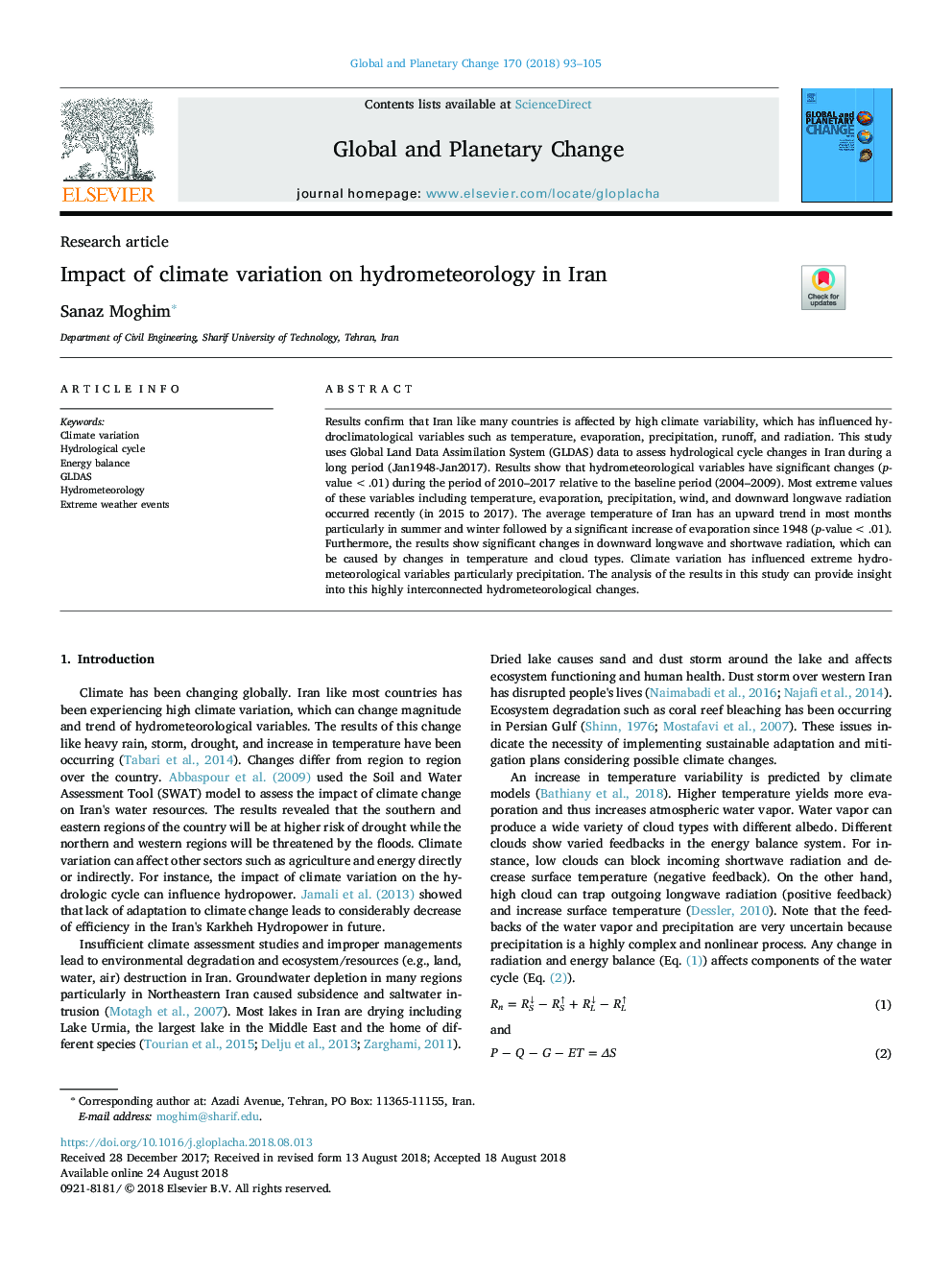| Article ID | Journal | Published Year | Pages | File Type |
|---|---|---|---|---|
| 10130317 | Global and Planetary Change | 2018 | 13 Pages |
Abstract
Results confirm that Iran like many countries is affected by high climate variability, which has influenced hydroclimatological variables such as temperature, evaporation, precipitation, runoff, and radiation. This study uses Global Land Data Assimilation System (GLDAS) data to assess hydrological cycle changes in Iran during a long period (Jan1948-Jan2017). Results show that hydrometeorological variables have significant changes (p-value<.01) during the period of 2010-2017 relative to the baseline period (2004-2009). Most extreme values of these variables including temperature, evaporation, precipitation, wind, and downward longwave radiation occurred recently (in 2015 to 2017). The average temperature of Iran has an upward trend in most months particularly in summer and winter followed by a significant increase of evaporation since 1948 (p-value<.01). Furthermore, the results show significant changes in downward longwave and shortwave radiation, which can be caused by changes in temperature and cloud types. Climate variation has influenced extreme hydrometeorological variables particularly precipitation. The analysis of the results in this study can provide insight into this highly interconnected hydrometeorological changes.
Keywords
Related Topics
Physical Sciences and Engineering
Earth and Planetary Sciences
Earth-Surface Processes
Authors
Sanaz Moghim,
